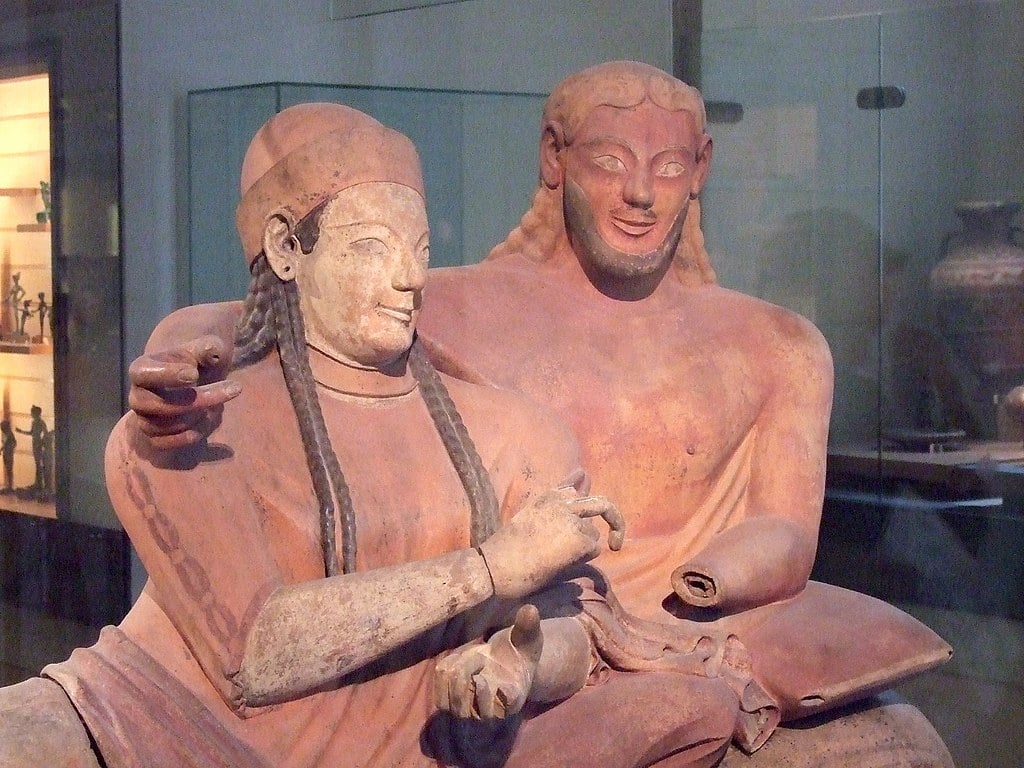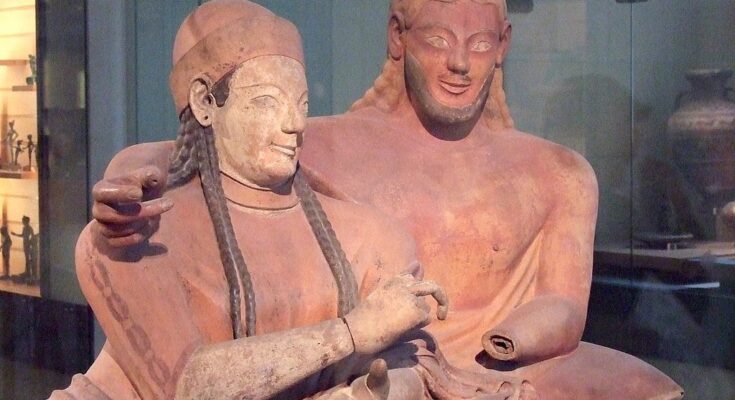
The Etruscans are one of the most famous nations of ancient Italy. They were Rome’s powerful neighbors, and their predecessors in many respects. However, by the time the Roman Empire came into being, the Etruscans had essentially disappeared. How did this happen?
Wars between the Romans and the Etruscans
Originally, Etruria was more powerful than Rome. In fact, an Etruscan dynasty even ruled over Rome throughout the sixth century BCE, and the Etruscan king Lars Porsenna appears to have briefly conquered Rome at the end of that century.
However, over the next few centuries, as Rome grew in power, the Etruscans grew weaker. They suffered pressure from all sides. From the north, Celtic tribes invaded Italy and conquered the land north of Etruria. They also conquered the land to the east of the Etruscans, cutting off their access to the Adriatic Sea.
Greek city-states from Magna Graecia, the southern portion of Italy, were growing in power and gaining dominance in the Tyrrhenian Sea. Before long, Rome had conquered the entire Latin League, controlling all the Latin cities in Italy.
Surrounded by the Celts, the Greeks, and the Romans, it was inevitable that the Etruscans would fall eventually. In the first two decades of the third century BCE, Rome conquered numerous Etruscans cities. These crushing victories essentially put an end to the wars between the Romans and the Etruscans.

Life under the control of Rome
What happened after this? The Etruscans were absorbed into the greatly expanding territory of the Roman Republic, but they did not disappear entirely. After all, lots of nations were conquered by the Romans while maintaining their distant cultural identity.
In the case of the Etruscans, we know that they continued to exist as a distinct people for centuries after their absorption by Rome. For example, the Etruscan League continued to exist and function similarly to how it had previously. In fact, the number of cities in the league actually increased.
Furthermore, we know that the Etruscan language continued to be spoken by the inhabitants of that territory. Therefore, the Etruscans certainly did not disappear immediately after the Romans conquered them. They continued to exist and function as a distinct people.

The Etruscans disappear through cultural assimilation
Within the Roman Empire, various nations managed to maintain their distinct cultural and ethnic identity. For example, the Britons continued to identify as Britons throughout the period of Roman rule and afterwards. Outsiders likewise recognized their distinct identity.
In contrast, this did not happen with the Etruscans. The Etruscans disappeared because they failed to maintain a distinct identity during the centuries of Roman rule. Exactly how this happened is unknown, especially given the continued existence of the Etruscan League.
What we do observe in the archaeological record is that Etruscan funerary inscriptions (a common type of Etruscan writing) become much less common by the first century BCE. This suggests that Etruscan as a language was becoming far less common by that time, and it may even suggest the decline of Etruscan culture.
Livy noted that Etruscan was no longer widely taught to the youth, having been replaced by Greek.
While there are several disparate mentions of Etruscan soothsayers or priests over the next few centuries, it would appear that the Etruscans essentially disappeared as a distinct people by the end of the first century CE.



